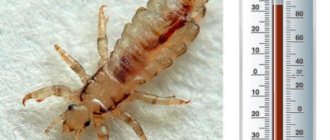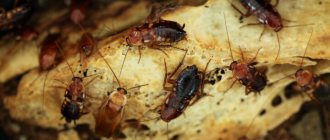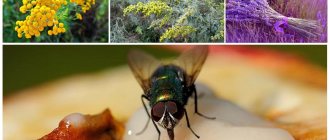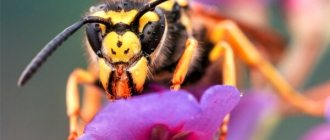Many summer residents and gardeners associate moles only with the appearance of a large number of ugly piles of earth in carefully tended beds, as well as with regular damage to various root crops - carrots, beets, potatoes, onions... And if you ask, for example, a lover of outdoor activities in the country, what If a mole eats, then many would answer that, in fact, it eats these very vegetables - carrots, potatoes, and sometimes it doesn’t disdain garlic.
In general, the food preferences of moles are often attributed to everything that is damaged in one way or another during the life of these animals on the site.
At the same time, even schoolchildren who are little familiar with gardening know well that the mole is a predator, and it feeds mainly on insects and earthworms.
This is a certain contradiction associated with the idea of what exactly moles eat: book and scientific theory says that moles feed on invertebrate animals, but garden practice seems to clearly show that moles eat underground parts of plants.
What is the truth here? Everything falls into place if you understand not only what moles eat, but also how they do it...
Mole's favorite food
Indeed, moles eat mainly invertebrate animals, with earthworms making up the largest part of their diet. This is a fact proven by specially conducted research: scientists caught animals with mole traps, opened the carcasses and then studied the contents of the stomachs.
According to the results of such studies, the following were found in the stomachs of moles:
- Earthworms - more than 90% of the contents; they were found in all captured animals;
- Beetle larvae - about 6% of the contents;
- Other insects, millipedes and crustaceans (woodlice) - about 3%;
- Residues of grains and soft parts of plants, tubers and root vegetables - less than 1%.
We conclude: moles eat mainly earthworms and insect larvae, and also slightly diversify this delicious meat diet with coarser adult insects and various invertebrates, and very rarely eat parts of plants.
In general, these studies only confirm other scientific data. For example, these:
- The structure of the mole's teeth and entire digestive system fully corresponds to the structure of the digestive system of a predatory animal. It has a relatively short intestine, sharp, well-developed fangs and incisors, but rather weak chewing teeth. In addition, the mole's metabolism is very fast, which is typical for animals that eat meat;
- The mole is the closest relative of such predators as the shrew, shrew and muskrat. It would be strange if a representative of a family that includes some of the most voracious predators on Earth turned out to be a vegetarian...
This is interesting
Indeed, the smallest carnivorous mammals on the planet turn out to be the most voracious, if you correlate their body weight with the weight of the food they consume. For example, a shrew, weighing only 5-6 grams, consumes as much food per day as it weighs. If she were the size of a lion, she would need at least 100-150 kg of meat per day. Fortunately, biological laws prevent such voracious creatures from becoming large, and large predators from being such active eaters.
To put it simply, a mole is the same shrew, only it has switched almost completely to an underground lifestyle. But this transition did not affect food preferences in any way - moles eat everything that their common ancestors with shrews ate.
At the same time, the mole eats mainly earthworms not so much because of their unique nutritional value or taste, but because of their abundance and prevalence in the fertile layer of the earth. The animal is constantly moving in its underground tunnel, or digging a new one, and at the same time catches and immediately eats everything that comes in its way. If you come across an earthworm, it will eat it; if you come across a slug or centipede, they will also go for a “snack.”
Of course, a mole’s diet varies somewhat depending on what biotope it lives in and what soils it digs its burrows in. For example:
- In the forest, the mole feeds on earthworms, but approximately a third of its diet in the warm season also consists of large ants, woodlice and centipedes that accidentally crawl into its underground passages;
- In the meadow, moles also mainly eat worms, but here an important part of their diet consists of larvae and adult insects (usually pests of plant roots): beetles and their fat white larvae, wireworms, and butterfly caterpillars. Since there are a lot of plant roots in the meadows, there are more of these pests here than in the forest, and they end up “on the mole’s table” more often;
- On soils with a significant proportion of sand and clay (which, by the way, these animals do not like), moles are limited in nutrition. Here a larva or beetle is a rare delicacy, and as a result, almost the entire diet of the dungeon dweller consists of the ubiquitous earthworms.
On a note
The hunting grounds of moles can be located on the borders of different biotopes - part can be located under a tree grove, another part - in a forest clearing or under a field. The inhabitant of such a site can significantly diversify its diet, moving either under the roots of trees or onto oily, plowed and fertilized cultivated soil.
However, the predatory nature of moles is far from limited to worms, insects and their larvae. Few people know that if a mole has the right opportunity, he does not disdain almost anything that moves and consists of flesh...
Cubs
Mating of moles occurs from mid-April to the end of May. During this period, characteristic molehills can often be observed on the surface of the site.
Pregnancy of females lasts about 1 month, respectively, a new generation is born in June-July. Each litter can contain up to 9 babies. In fat years, individual females may have 2 litters per season.
Born moles weigh no more than 5 g. They are completely naked, toothless and helpless. During the first 3 weeks, a caring mother regularly feeds them milk, carefully looks after them and protects them. At the age of 1 month, grown-up babies begin to obtain food on their own; their main diet is gradually replaced by worms and insect larvae. After two months, the size of the cubs becomes the same as that of adults.
What else can be included in the diet of a dungeon dweller?
If a mole in its feeding passage discovers any living creature that is smaller in size and with which it is able to cope, it eats it.
For example:
- The mole eats the mole cricket - this is a large and therefore nutritious insect, which, moreover, is low-hazard and non-toxic, and serves as an excellent snack for the animal. Partly due to this, the mole is not such an unambiguous pest in gardens and summer cottages - sometimes the benefits of its feeding on mole crickets exceed the damage it causes to the beds;
- Moles even eat mice. Of course, they are not purposefully looking for them, but when, digging a new tunnel, a mole “breaks into” a mouse nest with little mice, the fragile animals almost always serve as food for an insatiable predator. Moreover, even adult mice that run into underground passages can be eaten by a mole, although this happens very rarely, since the mice are too agile and manage to escape;
- Lizards, frogs, small toads and snakes also often become victims if they fall into wormholes and meet the “master of the dungeon” in them;
- Moles also eat spiders, even large and poisonous ones, such as tarantulas, but, again, much depends on the ability of the potential victim to quickly escape from the predator. The situation is similar with ants - the mole eats them as it moves, without stopping too much.
On a note
The feeding passages of moles themselves are a kind of traps into which various victims of these animals often fall. Spiders and centipedes crawl into them, earthworms burrow into them, small mammals run in, and lizards hide. One of the important tasks of moles is to regularly check the dug passages, and if suddenly they stop “catching” the required amount of food, dig new “traps”.
In rare cases, moles can eat their own brothers. These animals are very aggressive towards other individuals in their feeding area, and when they meet, conflicts and fights occur between them, sometimes ending in the death of one of the animals. The winner does not show much scrupulousness, and can quite calmly eat the defeated opponent.
It is also useful to read: Do moles have eyes and do these animals need vision underground?
Accordingly, when faced with a shrew smaller than itself, the mole will try to diversify its diet with it.
Thus, in nature, the mole feeds not only on insects or worms, but on almost everything that moves, and with which the generous soil deigns to please it.
Various remains of plant food, which are found in the stomachs of moles during autopsy, enter the animal’s diet only sporadically, often by accident - during continuous digging of underground passages and eating worms and insects among the roots of plants. In general, plant food is not significant for the animal.
What does a mole eat in winter?
First of all, it is worth noting that moles do not hibernate in winter, continuing to dig underground passages and actively feed.
In winter, the mole eats everything that it eats in summer, but adjusted for changes in the proportion of corresponding food objects in the soil. For example, in the summer, beetles and ants are found in large numbers in the ground, but in winter, neither one nor the other can be found (most of the beetles die in the fall, only larvae remain in the ground; and ants practically do not move outside the anthill in winter) .
In the winter season, the mole may come across pupae of beetles and butterflies, shallow-overwintering wasps, hornets and some other insects in the soil - all this also forms part of the animal’s winter diet. However, moles do not change their habits with the onset of cold weather, and continue to consume mainly earthworms. Fortunately, this food does not disappear from the soil (in winter, earthworms burrow deeper and fall into suspended animation).
In addition, in winter, moles also feed on worms, stored since the summer and “stored” in abundance in various parts of the underground passages. The animal bites off the front half of the worm’s body (“head”) and eats it immediately. The back part of the body, unlike the front, is not capable of regeneration, and dies quite quickly, thereby remaining a kind of “canned food in reserve.”
This is interesting
The idea that if you cut an earthworm in half, two viable halves will appear is deeply erroneous. Only the front half is capable of regeneration, and the back half always dies.
Sometimes the mole paralyzes the worm by biting through the nerve ganglion - as a result, the worm does not die immediately, but it cannot crawl away, simply lying in the feeding passage and waiting for the hungry animal to stumble upon it again and feast on completely fresh meat.
In different mole holes, researchers found up to several hundred worms.
On a note
The mole makes its reserves for the winter when there is an excess of worms in the summer, when, when moving along the passages, it constantly encounters them, but due to overeating, it can no longer eat right away. In this case, the mole, practically without stopping, bites through the worm’s body exactly in the right place and continues on its way. And already in winter, checking its passages, the animal comes across such canned food and eats them. The mole can also store worms in special compartments of its burrow system.
In addition, in winter, shrews and mice often find themselves in mole tunnels, for which at this time of year it is much more difficult (and sometimes even impossible) to move under or on the snow. Getting into the tunnel, the animal tries to find here either an insect (if it is a shrew), or roots and tubers (if it is a mouse), and may encounter a mole...
Note that wherever the mole lives, in winter and early spring there is a significant mortality of these animals precisely from lack of food. Due to its very fast metabolism, the insectivorous animal cannot remain hungry for more than a day, and in winter it often does not find anything nutritious within a day.
Food in winter
Scientists have long been interested in the diet of moles. Numerous studies have established that what moles eat is exclusively of animal origin. Plant fibers enter the animals' bodies either accidentally or in the stomachs of eaten worms. And even once the vegetation enters the mole’s body, it cannot be digested and simply leaves the body.
The search for food is carried out by digging more and more new passages, when there is no one to hunt in the old ones. In case of a shortage of usual food - worms, insects and larvae - moles eat small vertebrates and even frogs and rats.
In the process of constant work underground, moles spend a huge amount of energy, the restoration of which requires impressive amounts of nutrition. The animals have a very good metabolism, which also affects their appetite. During the day, the individual absorbs an amount of food exceeding its own weight (70-140 grams).
The mole's metabolism is so good that the animal can digest 50 grams of food in just 30 minutes. And this is provided that the animal’s stomach holds only 20 grams. After 4-6 hours he is ready for the next meal. On average, several hours pass between such feedings, which are accompanied by a sleepy state.
In the cold season, animals are less voracious, since they dig less and, accordingly, spend less energy.
Diggers are very creative in securing supplies for the winter. They catch worms and then simply bite their heads. This immobilizes the worms, but keeps them alive. In this form, the worms are laid in rows along the walls of the passages.
In terms of water, moles are also very greedy. Therefore, they invariably live near some body of water to which access is provided.
The typical habitat of an underground inhabitant includes vast natural landscapes: forests, steppes, and coastal areas. This animal can only live in soft soil without stones and large amounts of groundwater.
The geography of his residence, as well as the absence of massive teeth, determined his diet:
- Earthworms;
- Gastropods without shell;
- Woodlice;
- May Khrushchev;
- Nutcrackers;
- Medvedki;
- Scolopendra;
- Spiders.
In addition to adult insects, the animal also likes to feast on larvae. Also, small vertebrates can get on the “table” if they cannot move quickly. In one day, an adult can eat an amount of food equal to its weight.
We invite you to read: Woodlice in the apartment: habitats, prevention, methods of disposal
If you fast for as long as 15 hours, death can occur.
During the winter it does not hibernate, but significantly reduces its appetite. In advance, the mole makes reserves from headless earthworms (their total number can reach several hundred).
Representatives of this species practice eating their own kind if one sets foot on the territory of another.
For summer residents and gardeners, moles have an extremely ambiguous meaning. Thanks to their digging activity, they improve the fertile properties of the soil: looseness improves, excess moisture is removed through burrows, and humus is enriched with animal waste products. They also kill a number of insect pests and sometimes field mice.
The scope of damage caused is no less extensive:
- In the process of searching for earthworms, the animals destroy the root system of vegetables, fruits, berry bushes and ornamental flowers. The most active individuals can completely destroy a number of plantings;
- The destruction of earthworms practically eliminates their beneficial role for the fertile layer of the earth;
- The mounds at the entrance to the hole gradually become hummocks, making it difficult to move around the garden. They also interfere with the use of garden tools (for example, scythes) and spoil decorative paths and flower beds;
- Negative impact on the garden drainage system (if present).
There are people who believe that moles are vegetarians and burrow into the ground solely in search of plant roots. In fact, in nature these animals are real predators. They feed on earthworms, beetles, flies, wasps, mole crickets, ants and various larvae found in the ground. They can even cope with mice, small snakes, lizards and frogs that find themselves in a hole.
Moles get their food this way: they build a whole network of branched passages, then constantly move along them, picking up prey that they find.
When digging underground passages, the animal expends a lot of energy, so to compensate for it, it is constantly looking for food. The weight of insects, worms and larvae eaten at one time is about 30 g, and over the course of a day it is almost equal to the weight of the mole’s body.
In addition, he drinks a lot of water and stores earthworms for the winter. It is active throughout the year, making feeding passages even in winter. Worms crawl into them, attracted by mole musk and higher air temperatures.
Household plots are the most favorite habitat for moles, which prefer loose, developed soil where various types of insects accumulate.
The mole digs passages, rotating in the ground and alternately scraping away the soil with paws with strong claws.
The basis of the animal's diet consists mainly of earthworms, making up up to 90% of the total, which prefer soft soil rich in organic matter. Worms are the most common and numerous invertebrates in the garden, which was the main reason for choosing them as food for animals.
The mole also eats various insects: chafers, click beetles, caterpillars, spiders, mole crickets, centipedes, slugs and woodlice. During the day, the animal eats up to 55 - 60 g of various foods, which include 20 g of worms. The mole feeds several times during the day with a break of 4–5 hours, which it needs to digest food.
After eating, the mole rests in the hole, curled up. The mole has a very high metabolism, which forces it to constantly eat with short rest breaks. The maximum gap between meals should not exceed 14–17 hours, which forces the animal to constantly look for food.
The mole leads a solitary life and is aggressive towards its relatives. When two mature animals of the same sex collide, a fight inevitably occurs between them, often ending in death for one of the opponents.
After winning, the winner eats the losing opponent. The animal is ready to enter into mortal combat when it meets any smaller animal in its gallery and, after winning, mounts it.
Moles lead an active lifestyle throughout the year and do not hibernate in winter. Winter supplies are collected during the fall and include various insects and earthworms.
The main part of the supplies consists of earthworms, which the mole, when found, bites through the head and takes to the hole for supplies.
Note! In this way, supplies consisting of several hundred worms are collected. Various invertebrates are also used as food (pupae of hooks and butterflies, wasps, hornets), which fall into mole tunnels when searching for wintering sites.
We suggest you read: What are the dangers of moles in a summer cottage?
READERS RECOMMEND!
Say goodbye to pests FOREVER!... An environmentally friendly device that repels rodents and insects will help in the fight against rodents and insects...
Moles eat mainly invertebrate insects, as well as frogs, lizards and mice.
Moles do not have front incisors and therefore cannot spoil garden plants (tubers), but mice gain access through their passages passing among the plants, which damage root crops, causing losses to gardeners.
The passages made by the animal are a multi-tiered system with a hole diameter of 5–6 cm. The passages made have a specialization and are divided into 2 types: feeding and living. Feeding passages serve to lure various invertebrates, where they are attracted by the smell of the animal.
The mole mainly digs tunnels at night and can build galleries up to 50 m long. The animal digs its main residential burrows at a depth of 1.5 - 2 m and places them, as a rule, among the roots of trees and shrubs. The mole digs feeding passages at a depth of 5 cm from the surface of the earth, which become noticeable along a small earthen rampart on the surface of the earth.
Note! In winter, animals dig feeding tunnels directly under the snow and in the soil below the freezing level. After snowless, frosty winters, there is a high level of mortality of animals caused by a lack of food.
Moles lead a mostly sedentary lifestyle and leave familiar territory only in the presence of serious life-threatening circumstances.
The offspring, after reaching adulthood, settle around the maternal site within a radius of 2 km.
Due to the air flow passing through the system, the stern passages have a higher temperature compared to the surrounding ground. They also retain the smell of mole musk for a long time, which together attracts insects. Mole tunnels are also used by shrews and voles, which often steal food supplies prepared for the winter.
Let's celebrate! By breaking through their tunnels, moles help improve the soil structure and help drain moisture into the lower layers of the soil. Many gardeners consider them pests and try to get rid of the animals by using various methods and preparations, which occurs with varying degrees of success.
In winter, moles do not hibernate. To survive the hungry winter, they accumulate supplies throughout the summer in special underground storerooms. In addition, moles continue to obtain fresh food - larvae, pupae and beetles, which have settled comfortably for a long winter.
Benefits of moles:
- They destroy the nutritious fleshy larvae of chafer beetles.
- They help clear the area of mole crickets.
- Reduce the population of shrews and mice.
Damage from moles:
- By building tunnels, these mammals involuntarily disrupt the root system of cultivated plants and spoil the root crops that interfere with them.
- Molehills are left on the site in the most inappropriate places.
As you can see, moles are not absolute pests, moreover, they are not small insects, but rather large mammals, so you should not deal with them mercilessly. Use ultrasonic repellers that will not harm animals, but will force them to constantly keep their distance from your garden plot.
A little about the mole’s nutritional “culture”: when, how and how much does it eat?
The mole eats a lot and often. During the day, he eats about 5-8 times, crawling out of the nesting chamber in which he rests, and for a very long time collecting food in the feeding passages.
Between meals the animal rests and sometimes sleeps.
On a note
Digestion of a portion of food lasts about 4-5 hours for a mole. After this time, the animal becomes hungry again, and after 16-17 hours, if it does not find food, it weakens and quite quickly dies from hunger. Thus, the mole literally needs to constantly eat.
In one sitting, a mole eats about 15-20 grams of food, and in a day - about 50-60 grams. As a rule, he needs an amount of food per day that is 60-70% of his body weight, although in times of hunger he can “get by” and 20-30%. And on “fat” summer days, while fattening up, the animal can eat as much as it weighs.
It is also useful to read: Interesting facts about the life of the star-nosed mole (star-nosed mole)
It may seem that the mole eats a lot (if a person consumed the same amount of food in relation to his weight, he would have to eat 40-50 kilograms of meat per day). Such gluttony of animals looks fantastic, but from a scientific point of view it is quite easily explained:
- Moles have a very fast metabolism. This means that the food consumed is converted into energy or fat reserves in their body within a few hours. After this, the animal needs to eat again;
- Moles are very active and spend a lot of energy. Only those who have not seen them might think that they are clumsy, slow animals. In fact, the mole is very fast, and if it does not sleep, it is constantly in motion, which means it constantly wastes energy that needs to be restored;
- In search of food, the mole does a lot of hard work, so to speak. Figuratively speaking, his energy investments in searching for food are very large, and in order to at least “beat them off”, he needs to eat a lot. To understand this statement, imagine that in order to get a portion of food you need to dig a hole in the ground with a diameter equal to the width of your shoulders and a length of about a meter. Also imagine how much energy you will spend on this and what the portion of food should be in order to at least restore strength after such work;
- Due to the small size of the mole's body, heat transfer in relation to its mass is significantly higher than that of larger animals. This means that, constantly staying in cold ground, an animal needs more food to maintain body temperature than, say, a person or a dog.
When feeding, the mole sometimes simply moves along the passage, picking up its victims in it, and when it is full, it moves into the residential passage and rests there. If necessary, the animal begins to dig new passages.
In winter, the mole requires slightly less food than in summer, due to which it can survive in conditions of a reduced amount of food.
There are no pronounced fluctuations in daily feeding activity in moles. Except that at night the animals more often dig new tunnels and come to the surface, so at night they consume less food. But in general, these animals eat and rest approximately evenly throughout the day.
What are moles?
Their body is cylindrical, very dense, with a cone-shaped head.
A strong short neck, a wide forehead, widened hands of the front legs - all this helps the mole to be an excellent digger. In a day he can build an underground tunnel up to tens of meters long. He has virtually no vision. But a well-developed sense of touch, an excellent sense of smell and excellent hearing are specially created in order to obtain food. The peculiarities of the underground lifestyle are that the mole constantly spends a lot of energy on heavy excavation work. Energy must constantly be replenished. For this reason, he has a very good appetite. During the day, he can eat an amount of food that is comparable in weight to his own weight.
A mole is a small animal with a body length of 12–16 cm, a tail of 2–4 cm. The total weight averages 70–120 grams. Offspring appear once a year and consist of 3-9 blind cubs.
A distinctive feature of this species are small eyes with a diameter of 2 - 5 mm, the absence of external ears, which is replaced by the high sensitivity of the fur and the charm of the organs of touch.
The fur consists of villi growing at an angle of 90.* and when the animal moves forward along the underground galleries, the villi deflect backward, and when moving back they change direction to the opposite. This structure of the fur allows the mole to move through its passages quite quickly. Fur color: black, gray, brown, sometimes with tan marks and somewhat lighter in the belly area.
The animal's front paws are specially designed for digging the ground and are positioned with the palms facing outward, which allows it to be an excellent digger. The limbs of the front legs end in powerful claws most suitable for digging the ground.
Note! The mole perfectly navigates underground and breaks through passages strictly within its habitat zone, marking it with secretions - a secretion that warns other moles about the occupied area and the ban on visiting other people's possessions.
The mole's fur changes 3-4 times a year and is distinguished by its high density and thick pile. The average lifespan of the animal is 4 – 5 years.
Does a mole eat carrots, potatoes and other root vegetables?
There is a myth that moles love to eat root vegetables in garden plots, for which they are very disliked; gardeners themselves persecute and destroy them. In fact, moles do not eat potatoes, carrots, or, especially, garlic. And the myth itself is due to the following reasons:
- When making a move, the mole, as they say, “breaks through” - carrots, potato tubers, and onions crumble under its powerful claws. Where the animal decides to get to the surface, it breaks the bed and either throws the root of the plant to the surface, or the same root falls into the dug tunnel. Of course, by doing this the mole spoils the plantings, and the inexperienced gardener gets the impression that the animal is simply eating his harvest;
- Molehills are actively used by mice and voles, precisely in order to get to juicy root crops. Gardeners rarely see the animals themselves, but they notice well that along the molehill all the tubers are beaten and gnawed. A person's thoughts are easy to read here;
- In the south of the country, in the zone of steppes and semi-deserts, gardens are damaged by rodents leading an underground lifestyle - mole rats, mole rats, zokors and some of their relatives. They actually feed on roots. Gardeners, not really understanding who dug the underground passages, blame everything on real moles.
At the same time, in vegetable gardens and cultivated lands, moles eat the same thing that they usually like to eat in the forest or meadows - that is, not potatoes or carrots.
Mole feeding in gardens and summer cottages
In vegetable gardens and orchards, while the mole does harm, it also brings benefits, since it eats mole crickets, wireworms, May beetle larvae and slugs. Ants, which gardeners often unsuccessfully try to fight, also suffer from moles - the animals can very effectively restrain the growth of anthills.
And yet, the basis of the diet of moles in summer cottages and vegetable gardens is earthworms. Again, not because animals love them very much, but because in beds generously fertilized with manure and constantly loosened, there are more of these worms than other invertebrates, and they are most often caught by animals when checking their hunting passages.
Considering that earthworms themselves are useful for the garden, by feeding on them, moles cause additional damage. And, as research shows, the harm to an animal exceeds the benefit it brings to a summer cottage or a separate garden.
Harm and benefit to humans
The predator does not pose a danger to humans, but a summer cottage can be seriously damaged. The role of the animal is twofold. Rodents seriously damage the lawn by creating their labyrinths under the area. They choose these places because there are a huge number of earthworms under the root system of the grass. Eating invertebrates also disrupts soil fertility. Earthworms are useful creatures for summer cottages. Their destruction by rodents leads to the appearance of a large number of pests.
The animal is also capable of destroying the root systems of cultivated plants, which is why planted vegetable and fruit crops in the country begin to die.
But if there are only a few insectivores, then they have their own benefits. Constant loosening of the earth fills the soil with useful elements. In addition, the underground creature fights one of the main pests for the garden and vegetable garden - the mole cricket. Insect is one of the mole's favorite dishes. The mole cricket is quite filling for a predator and is not poisonous.
Another benefit to people is animal skins. Rodent fur is highly valued in the fur market. Their skins are very warm and durable.
Who eats moles?
In turn, moles themselves often become victims of other predators. They are actively hunted by birds of prey (harriers, buzzards, eagles, owls), as well as foxes, wolves and dogs, martens. Young individuals are even eaten by weasels, which actively climb into mole holes in search of owners.
At the same time, some predators eat moles only in times of famine, since the animals smell strongly of musk and do not have a pleasant taste. This is partly why moles are not eaten in any cuisine in the world, even in China, where, it would seem, they can cook kebab from anything.
In nature, animals and birds that feed on moles can catch the animal, kill it, but, feeling the smell and not being hungry, they leave them at the place of capture. The same often happens with shrews, which have an even more unpleasant odor.










